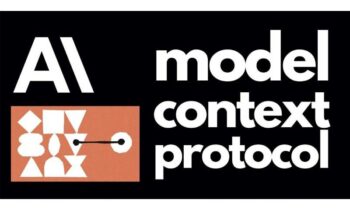
Project management is rapidly evolving, with trends like artificial intelligence (AI), data analysis, agile and hybrid methodologies, and soft skills becoming increasingly important. Project managers who want to be successful in the future need to be aware of these trends and adapt their skills and knowledge accordingly. This paper explores these trends, how they relate to the field of project management, and suggests some real-world application techniques.
Introduction
Project management is a rapidly evolving field, and new trends are emerging all the time. These trends are shaping the way projects are managed, and they will continue to do so in the future.
The following are some important trends that are shaping the future of project management:
The rise of artificial intelligence (AI)
AI is already being used in project management to automate tasks, analyze data, and make predictions. In the future, AI will play an even greater role in project management, helping project managers to make better decisions and to deliver projects more efficiently. Specifically, AI will help project managers –
- Make more efficient and effective by automating tasks and providing insights that would be difficult or impossible to obtain manually.
- For example, you could use a Large Language model to efficiently derive the insights and key pointers from a long chat thread or email conversation.
- Allow project managers to focus on more strategic and value-added activities, such as coaching and stakeholder management.
- Project Managers should be seen as a strategist on the team. By automating tasks using scripts generated from a model can help the project manager focus on tasks such as thinking through big picture impacts when making decisions and managing stakeholder expectations.
- Organizations that want to reap the benefits of AI project management need to start by gathering and cleaning project data, preparing their people, and dedicating the resources necessary to drive this transformation.
- It is in the interest of companies to provide GenAI education and training to project managers. Contact your Learning & Development group to explore such opportunities.
The increasing importance of data
Data is becoming increasingly important in project management. Project managers are using data to make informed decisions, to track progress, and to identify potential problems. In the future, project managers will rely on data more than ever before to manage their projects successfully.
- Data-driven project management is a strategic approach to project management that uses data and analytics to make better decisions, improve outcomes, and reduce risks.
- Example: Track key performance indicators (KPIs) such as development velocity, code quality metrics, and user satisfaction scores. Analyze this data to identify areas for improvement, refine development processes, and enhance product quality.
- Data can be used to identify and track progress, identify and mitigate risks, and make better decisions about resource allocation and project scope.
- Example : Utilize bug tracking software and code analysis tools to monitor progress and identify potential issues. Analyze data on bug resolution rates, code coverage, and test results to assess project health and make informed decisions about resource allocation and release timelines.
- Data-driven project management can help project managers to deliver projects on time, within budget, and to the desired quality standards. Examples include:
- Predictive Analytics for Project Scheduling: Analyze historical project data, including task durations, resource availability, and project dependencies, to develop predictive models for more accurate project scheduling.
- Real-time Progress Monitoring: Track project progress using real-time data from project management tools, task completion metrics, and automated progress reports. Analyze this data to identify deviations from the schedule, take corrective actions promptly, and maintain project timelines.
- Cost Estimation and Cost Control: Analyze historical cost data, resource utilization metrics, and project complexity to develop accurate cost estimates and establish project baselines. Monitor project expenses continuously, compare actual costs to estimates, and identify potential cost overruns early.
- Quality Defect Tracking and Analysis: Utilize defect tracking software and quality assurance tools to capture, categorize, and analyze defects throughout the project lifecycle. Analyze defect data to identify patterns, prioritize defect resolution, and prevent recurrence.
The shift to agile project management
Agile project management is a flexible and iterative approach to project management. It is becoming increasingly popular because it allows project managers to respond to change more quickly and to deliver projects more value to the business.
Here3 is a great paper by Karen White on this subject. The key points from the article are:
- The traditional waterfall approach to project management is no longer effective in today’s rapidly changing business environment.
- Agile project management is a more flexible and adaptable approach that is better suited for managing projects in uncertain and dynamic environments.
- Agile project management embraces change, rather than resisting it. This allows project teams to respond to changes quickly and effectively.
- Agile project management is also more iterative, meaning the project plan is not set in stone. Instead, the project plan is continuously updated and refined as the project progresses.
- This iterative approach allows project teams to learn from their mistakes and make changes quickly as needed.
The rise of hybrid project management
Hybrid project management is a combination of traditional and agile project management methodologies. It is a good fit for projects that need to be delivered on time and within budget, but that also need to be flexible enough to respond to change.
A great way to use this technique is to use waterfall for planning (i.e. agree on high level things and identification of project phases) while using agile for execution (breaking milestones into tasks, creating backlogs, running iterations to produce output every 2 weeks, estimating every tasks and tracking project metrics).
The increasing importance of soft skills
A project manager spends roughly 80% of their time in communication. Soft skills like communication, collaboration and leadership are increasingly important in project management. This is because project managers need to be able to work effectively with a variety of stakeholders, including team members, customers, and suppliers.
When leading large scale projects, we need to work with multiple stakeholders across teams and orgs. It is important to remember that every team might have different motivations and charters. What is a P0 for your org, might not be a P0 for some other org. Setting the right expectations, communicating clearly, and showing leadership is essential to the success of such projects.
In addition to these trends, there are a number of other factors that are shaping the future of project management, such as the increasing complexity of projects, the globalized nature of work, and the growing importance of sustainability.
Project managers who want to be successful in the future need to be aware of these trends and to adapt their skills and knowledge accordingly.
Application ideas to implement AI in Project Management
Here are some specific examples of how new trends are shaping the way projects will be managed in the future:
- Use AI to automate more tasks in project management. This will free up project managers to focus on more strategic tasks, such as building relationships with stakeholders and managing risk. A great way to do this is to leverage public LLM (large language models) models such as Bard and ChatGpt. For example, I recently automated a burndown chart for my project. I asked the LLM to generate appscript code to set up the automation I needed. Then I made minor changes to the code which greatly reduced the human effort involved. The result is a script that runs every weekend and shows me the progress on the project before my Monday meetings. Give it a shot, it’s easier than you think!
- Data will be used to make better decisions in project management. For example, project managers will be able to use data to predict project outcomes, to identify potential problems, and to make better resource allocation decisions. For example, I use the difference between the actual end date and the estimated end date (inserted during the planning phase) to calculate the schedule variance. When using this data in conjunction with resource allocation, I can see who has bandwidth to help on tasks that are falling behind.
- Agile project management will become more widely used. This is because agile project management is well-suited for the fast-paced and ever-changing world we live in.
Almost all projects now use some form of technology. Using AI to calculate project level metrics, create burndowns, and track tickets that are out of SLO (Service Level Objectives) is very efficient. - Hybrid project management will become more common. This is because hybrid project management offers the best of both worlds: the flexibility of agile project management and the structure of traditional project management. I am personally a great fan of this approach and regularly use it at work. When executing, agile is far easier for showing project progress and keeping engineers on track with their deliverables. The biggest challenge is adopting a new approach.
- Soft skills will become even more important in project management. This is because project managers need to be able to work effectively with a variety of stakeholders, including team members, customers, and suppliers.
Project managers who want to be successful in the future need to be aware of these trends and to adapt their skills and knowledge accordingly.
References
- Vargas, R. V. (2023, February 2). How AI will transform project Management. https://ricardo-vargas.com/articles/how-ai-will-transform-project-management/#:~:text=Antonio%20Nieto%2DRodriguez,up%20reporting%2C%20and%20facilitate%20testing.
- Alexander, M. (2023, May 19). The data-driven project manager: Using analytics to improve outcomes. CIO. https://www.cio.com/article/191508/the-data-driven-project-manager-using-analytics-to-improve-outcomes.html#:~:text=Risk%20and%20compliance%20management%20is,to%20move%20beyond%20being%20reactive.
- White, K. R. J. (2008). Agile project management: a mandate for the changing business environment. Paper presented at PMI® Global Congress 2008—North America, Denver, CO. Newtown Square, PA: Project Management Institute.



